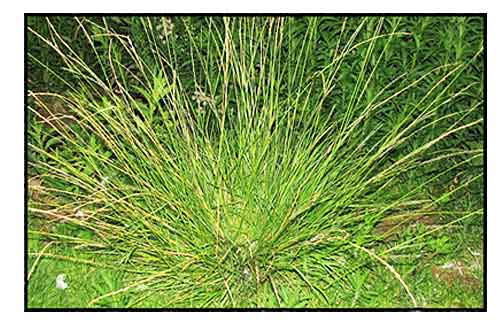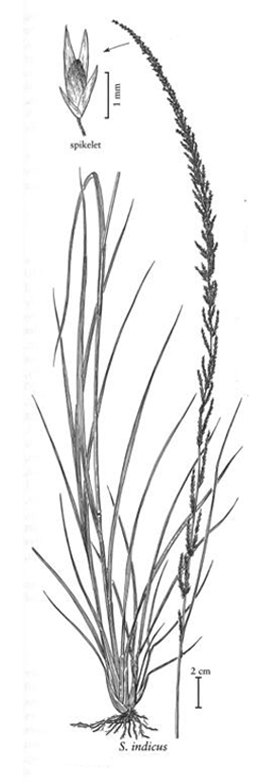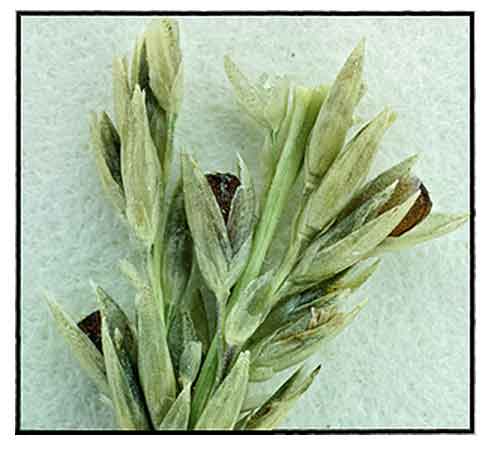
Family • Poaceae
Bakit
Sporobolus indicus (L.) R.Br.
SMUT GRASS
| Scientific names | Common names |
| Agrostis elongata Lam. | Bakit (P. Bis.) |
| Agrostis indica L. | Lusai (Subanon) |
| Agrostis orientalis Nees | Sangsangitan (Bontoc) |
| Agrostis tenacissima L.f. | Rattail smutgrass (Engl.) |
| Andropogon intortum Crantz | Smut grass (Engl.) |
| Paspalum lanceifolium Desv. | West Indian dropseed (Engl.) |
| Paspalum parviflorum Desv. | |
| Sporobolus angustus Buckley | |
| Paspalum berteroanus (Trin.) Hitchc. & Chase | |
| Sporobolus exilis (Trin.) Balansa | |
| Sporobolus indicus (L.) R.Br. | |
| Sporobolus indicus f. africanoides Jovet & Guedes | |
| Sporobolus indicus var. andinus Renvoize | |
| Sporobolus indicus var. exilis (Trin.) T.Koyama | |
| Sporobolus indicus f. microspiculus Jovet & Guedes | |
| Sporobolus indicus tenacissimus (L.f.) Peter | |
| Sporobolus lamarckii Desv. | |
| Sporobolus orientalis Kunth | |
| Sporobolus tenacissimus (L.f.) P.Beauv. | |
| Vilfa angusta Buckley | |
| Vilfa angusta Buckley | |
| Vilfa berteroana Trin. | |
| Vilfa exilis Trin. | |
| Vilfa elongata P.Beauv. | |
| Vilfa indica (L.) Trin. ex Steud. | |
| Vilfa orientalis Nees ex Trin. | |
| Vilfa tenacissima (L.f.) Kunth | |
| Vilfa tenacissima var. exilis (Trin.) E.Fourn. | |
| Sporobolus indicus (L.) R.Br. is an accepted species. KEW: Plants of the World Online | |
| Other vernacular names |
| AUSTRALIA: Jil-crow-a-berry. |
| BRAZIL: Capim-capeta, Capim-corteza, Capim-cortisia, Capim-lucas, Capim-moirão, Capim-toucerinha. |
| COLOMBIA: Espartillo, Grama, Guayacan, Rabo de burro, Rabo de mula, Raboeburro. |
| CUBA: Espartillo. |
| DOMINICAN REPUBLIC: Maicote de sabana, Pajoncillo, Pojun. |
| ECUADOR: Purun, Sinchiquigua. |
| GERMANY: Indiches Fallsamengras. |
| HONDURAS: Alambrillo, Pajilla. |
| INDONESIA: Rumput rantai alat, Jukut nyenyerean, Suket sadan. |
| PERU: Mula tsampa. |
| PUERTO RICO: Burillo, Cerillo, Matajoo matojillo, Matoj de burro, Sabanita, Serrillo. |
| VENEZUELA: Paja de gallina, Tucupen, Tucupera. |
| VIETNAM: Co long cong, Xa tur an. |
March 2023
![]()
 |
| PHOTOS / ILLUSTRATIONS |
| IMAGE SOURCE: Photograph: Sporobolus indicus / © Shir Vered / Non-commercial use / click on image to go to source page / Flora of Israel and Adjacent Areas |
| OTHER IMAGE SOURCE: Illustration: Sporobolus indicus / image modified / by Linda A Vorobik, Hana Pazdirkova / Non-commercial use / click on image to go to source page / © Utah State University |
| OTHER IMAGE SOURCE: Illustration: Sporobolus indicus / by Steve Matson / CC BY-NC 3.0 / Non-commercial use / click on image to go to source page / University of California, Berkeley / CalPhotos |
Additional
Sources and Suggested Readings |
• |
DOI: It is not uncommon for links on studies/sources to change. Copying and pasting the information on the search window or using the DOI (if available) will often redirect to the new link page. (Citing and Using a (DOI) Digital Object Identifier) |
| List of Understudied Philippine Medicinal Plants |
• |
 |

 Gen info
Gen info

